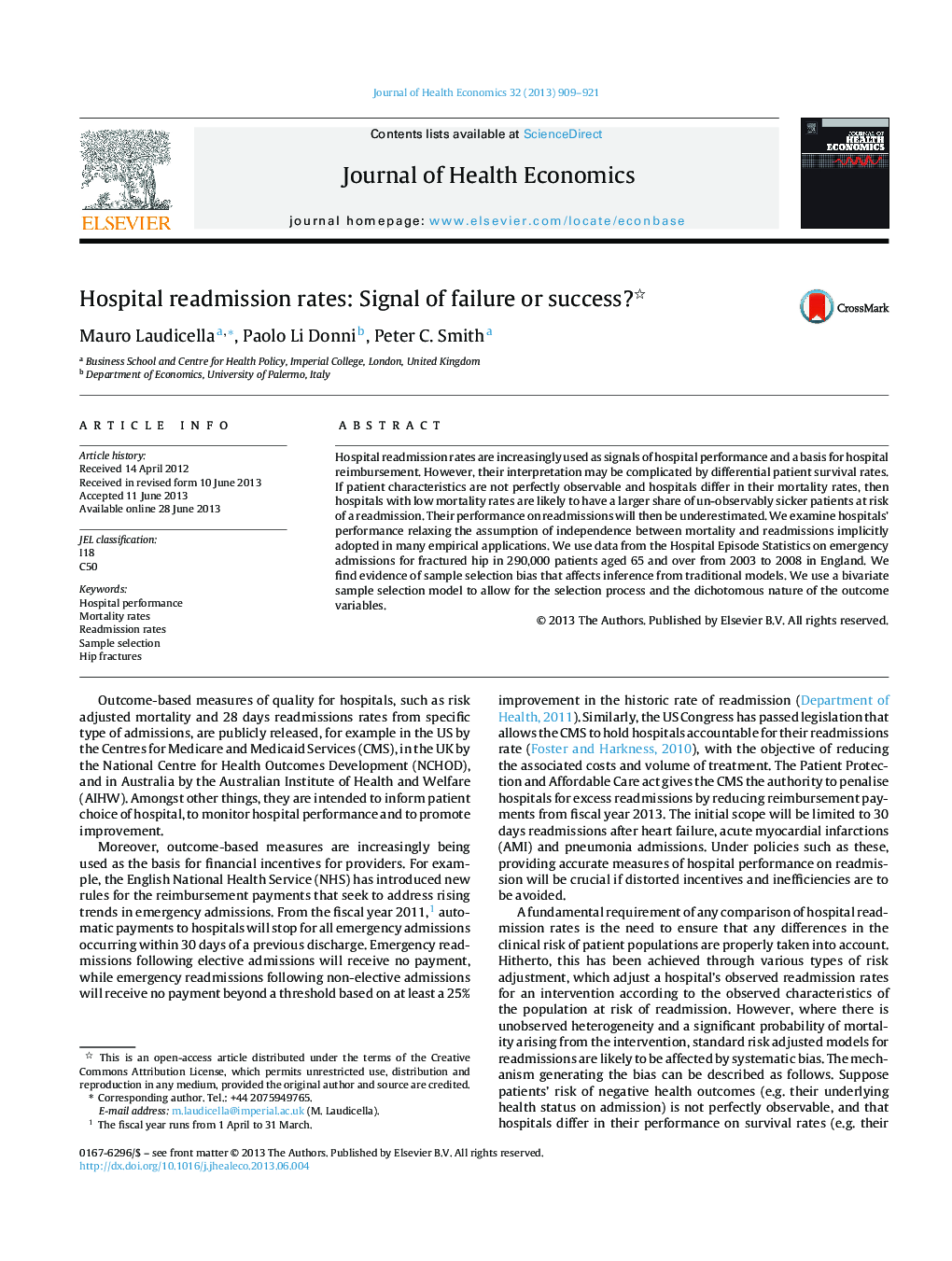| Article ID | Journal | Published Year | Pages | File Type |
|---|---|---|---|---|
| 10476746 | Journal of Health Economics | 2013 | 13 Pages |
Abstract
Hospital readmission rates are increasingly used as signals of hospital performance and a basis for hospital reimbursement. However, their interpretation may be complicated by differential patient survival rates. If patient characteristics are not perfectly observable and hospitals differ in their mortality rates, then hospitals with low mortality rates are likely to have a larger share of un-observably sicker patients at risk of a readmission. Their performance on readmissions will then be underestimated. We examine hospitals' performance relaxing the assumption of independence between mortality and readmissions implicitly adopted in many empirical applications. We use data from the Hospital Episode Statistics on emergency admissions for fractured hip in 290,000 patients aged 65 and over from 2003 to 2008 in England. We find evidence of sample selection bias that affects inference from traditional models. We use a bivariate sample selection model to allow for the selection process and the dichotomous nature of the outcome variables.
Related Topics
Health Sciences
Medicine and Dentistry
Public Health and Health Policy
Authors
Mauro Laudicella, Paolo Li Donni, Peter C. Smith,
